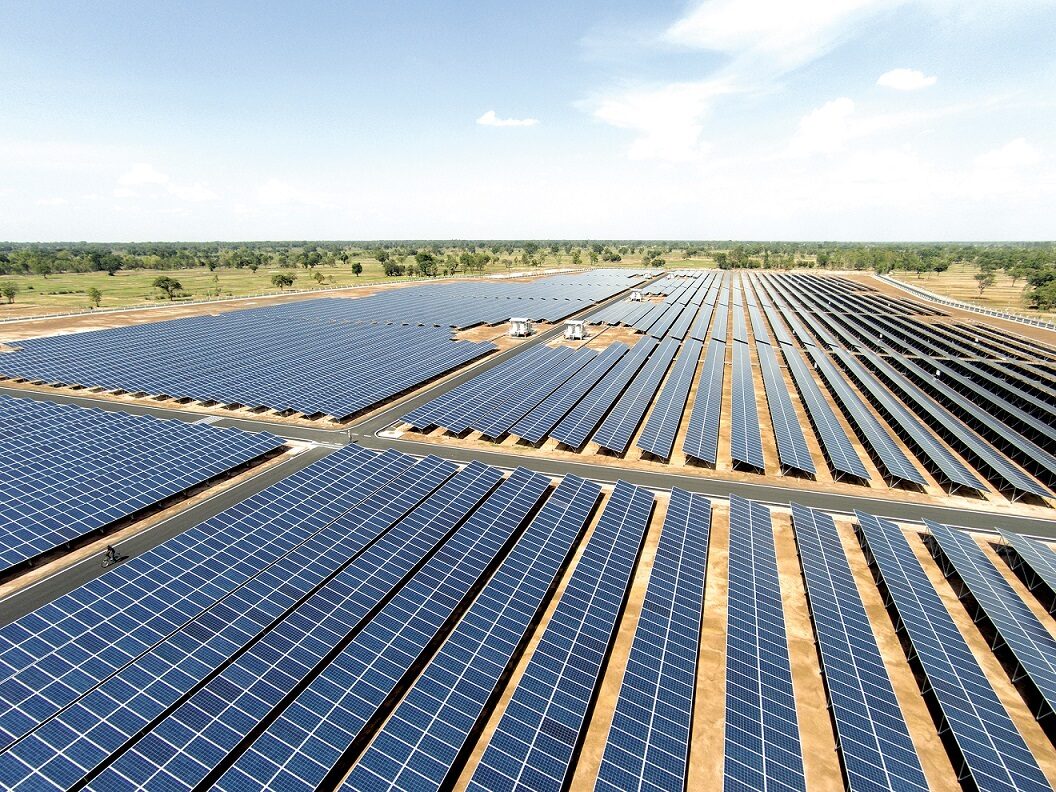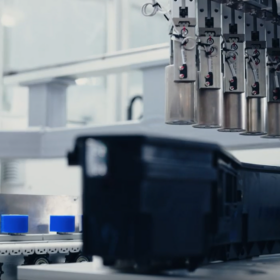From pv magazine Global
The words “whatever it takes” emerged as an EU rallying cry when uttered by then-president of the European Central Bank, Mario Draghi, in the face of the 2012 European sovereign debt crisis. It is fitting that EU Energy Commissioner Kadri Simson’s words would recall a moment of extraordinary EU response to unprecedented crisis, as today the continent confronts new and varied threats. The Russian war on Ukraine has reshuffled the deck, raised questions about how fossil fuels can undermine democracy, and refocused the energy transition on the role of renewables as security.
The reality of Russian influence over European energy supply, the immediacy of the gas-driven energy price crisis, and the damage of the climate crisis’ extreme weather events have splashed the truth of the energy transition across Europe’s front pages. Renewable – solar – energy offers the continent a lifeline to climate safety, geopolitical sovereignty and a shield to the high energy prices that European citizens are enduring.
In our official input to the upcoming EU Solar Strategy, SolarPower Europe has put forward eight key actions to solar-power EU energy independence. The paper also acts as our response to the initial European Commission REPowerEU proposals, which aim to disconnect the continent from Russian gas. In the short term, the actions set out in our “Raising Solar Ambition” paper would add 39 GW of EU solar capacity in time for the coming winter. In the long term, solar could deliver over 1 TW of EU cumulative capacity by 2030.
Manufacturing mission
The pathway to the EU solar terawatt age is not without obstacles. Permitting, grid access, and updating regulatory frameworks are all familiar challenges that SolarPower Europe is working with the sector and policymakers to overcome. Recalling Commissioner Simson’s words at the SolarPower Summit, rebuilding a European domestic PV manufacturing base will be crucial to support ambitious, necessary, European solar deployment.
Reinvesting in domestic manufacturing – through an EU Solar PV Manufacturing Act – is one of the eight key actions SolarPower Europe has identified to solar power EU energy independence. In our latest position paper, “Raising Solar Ambition for the European Union’s Energy Independence,” we set out the risk that accelerated annual rates of PV installations could become wholly dependent on imports, if domestic production cannot keep up with demand.
The first pages of Europe’s solar reindustrialization story set a minimum goal of 20 GW of manufacturing capacity by 2025, from polysilicon to modules. This is the target set by the European Solar Initiative prior to the Russian invasion of Ukraine, and the unprecedented energy prices consumers are facing today – twin crises that require stepping up ambition in the longer-term. Ambitious targets, both for PV manufacturing and solar generation capacity, endorsed at the policy level, will give investors the signals needed to unlock project financing across the board.
From a pre-SolarPower Summit roundtable with European Solar CEOs, Commissioner Simson’s speech acknowledged that domestic manufacturing financing was a key issue in rebuilding the industrial base. SolarPower Europe is calling for a €1 billion ($1.07 billion) EU Solar Fund – like the recent EU Chips Fund – to leverage the €8 billion of private investments required to re-establish at least 20 GW of PV manufacturing. The urgency of the task at hand cannot be underestimated, and SolarPower Europe has put forward a six-month target to close the financing process for projects.
Europe is already seeing the benefit of European funding support. Since my last article for pv magazine on Jan. 12, 2022, Enel Green Power has signed the first solar grant agreement under the EU’s Innovation Fund for large-scale projects. The European Commission fund awards nearly €118 million to Enel Green Power’s 3Sun Catania bifacial heterojunction factory, contributing to the ‘TANGO’ Italian Giga Factory production line development. The TANGO expansion will make the 3Sun site Europe’s largest gigawatt-scale factory producing high-performance bifacial PV modules, while supporting the regrowth of Europe’s manufacturing base.
Global competitiveness
At the SolarPower Summit, Commissioner Simson spoke of the role of eco-design requirements and energy labelling in highlighting the sustainability value of solar products, and this is an area where EU-level legislation will guide the way. The process to define and implement sustainability and circular economy requirements for PV products needs to be accelerated to ensure that PV products in the EU, and globally, are on a level playing field. A clear and respected “green label” on European PV products would showcase Europe’s sustainable production and allow the environmentally conscious consumer base to access information to advise their decisions accordingly.
The EU should also make use of all of its instruments to ensure a competitive business environment for manufacturers. Considering operational expenditures, such as electricity and materials, as well as capital access conditions in leading PV manufacturing markets (China, US, and India), the EU and member states must clearly define a framework allowing EU companies to viably compete.
EU manufacturers can thrive in a global market, but they need to have easy access to renewable PPAs and benefit from support on electricity costs. The European industrial base needs to be able to import raw materials like solar glass or aluminum frames, and should be allowed to export their products without import measures rendering them more expensive on the global market.
Mapping the way
With strong commitment from the European Commission, and some clear proposals on the table to guide the way, SolarPower Europe has launched a new online interactive EU Solar Manufacturing Map to plot the course of the re-emerging European PV industrial base.
The data highlights manufacturing capacity at different stages of the value chain, from module to wafer, and includes plot points of research centres and smart-fab solutions. Capacity can be explored at country level, and as a living tool to support the industry, we invite all players to feature in the product.
Soon after this article goes to print, and the solar community gathers in Munich for Intersolar Europe, we expect the European Commission to come forward with updates to its March REPowerEU proposals.
We anticipate that European solar generation capacity targets will be assessed and presented alongside a landmark European Solar Rooftops Initiative. We know that these next proposals will have clear implications for the sector and for EU PV manufacturing. Fortunately, with our action plan, and the support of our members, we also know what we must do to achieve the European solar manufacturing mission: whatever it takes.
About the author
Walburga Hemetsberger is the CEO of SolarPower Europe, which is currently working with the Solar Energy Association of Ukraine to support Ukraine’s power infrastructure needs. Her previous experience includes her roles as the head of the EU Representation Office at VERBUND for nine years, and as adviser of financial and capital markets at the Association of German Public Banks and Association of Public Banks (VÖB / EAPB). In addition, she has worked as a competition lawyer at Haarmann Hemmelrath and has experience on the DG Competition Merger Control Task Force. Walburga has also been a board member of Hydrogen Europe. She holds a degree in law and business administration from Leopold-Franzens Universität Innsbruck.
This content is protected by copyright and may not be reused. If you want to cooperate with us and would like to reuse some of our content, please contact: editors@pv-magazine.com.








By submitting this form you agree to pv magazine using your data for the purposes of publishing your comment.
Your personal data will only be disclosed or otherwise transmitted to third parties for the purposes of spam filtering or if this is necessary for technical maintenance of the website. Any other transfer to third parties will not take place unless this is justified on the basis of applicable data protection regulations or if pv magazine is legally obliged to do so.
You may revoke this consent at any time with effect for the future, in which case your personal data will be deleted immediately. Otherwise, your data will be deleted if pv magazine has processed your request or the purpose of data storage is fulfilled.
Further information on data privacy can be found in our Data Protection Policy.